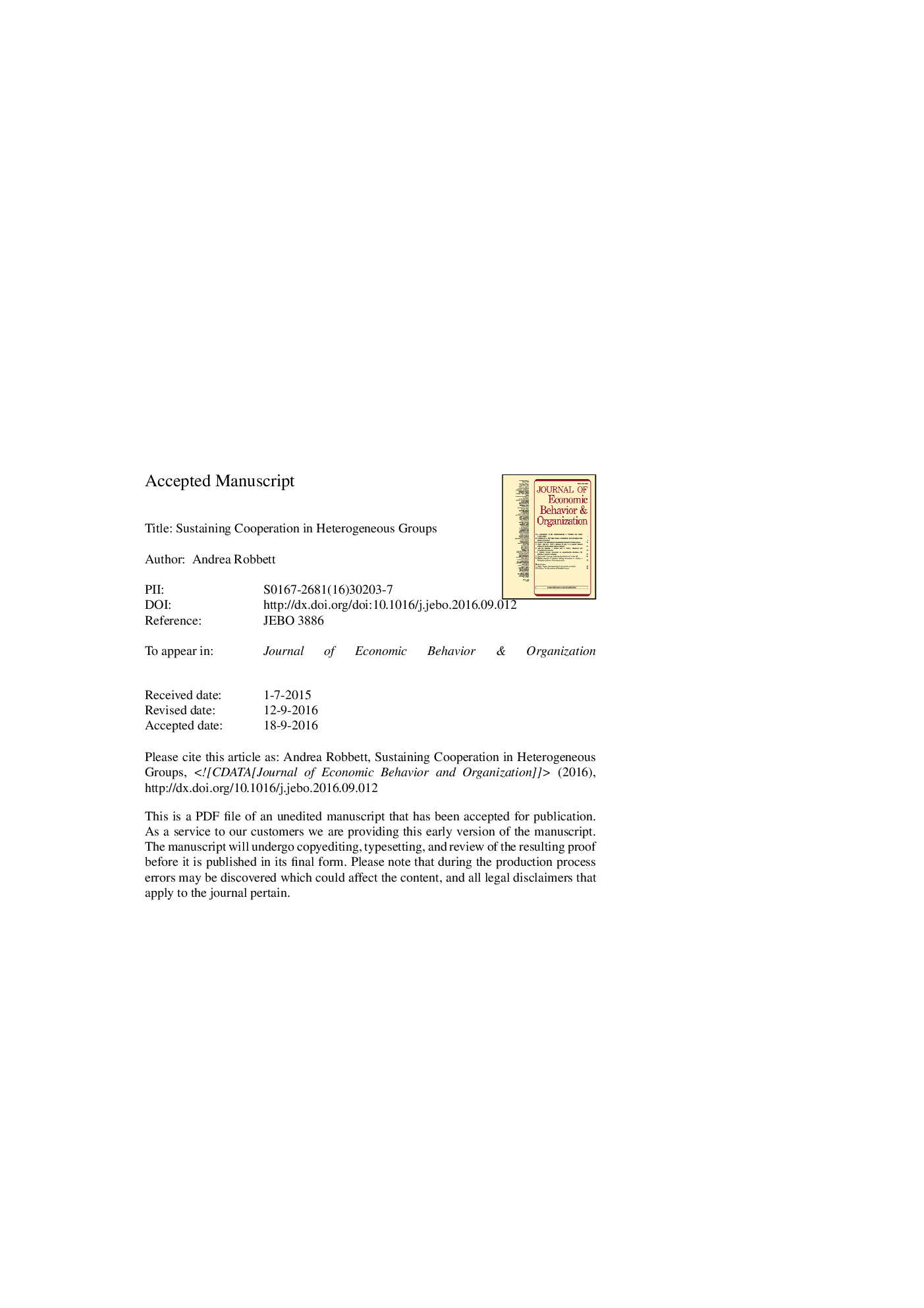| Article ID | Journal | Published Year | Pages | File Type |
|---|---|---|---|---|
| 5034714 | Journal of Economic Behavior & Organization | 2016 | 43 Pages |
Abstract
The public goods game has been studied extensively in the lab as the quintessential model of a social dilemma. Several mechanisms have been demonstrated to promote group cooperation in linear voluntary contribution experiments - such as communication, costly punishment, and centralized bonuses and fines. However, lab experiments have largely neglected a central obstacle to efficient public good provision: Individuals typically have different, private demands for consumption, hindering the ability of either a central authority or the group members themselves to calculate and enforce the optimal behavior. I adapt the standard public goods game to incorporate heterogeneous incentives and provide an assessment of each mechanism in this richer environment. I find that baseline cooperation is similar to that in the standard linear game. Sanctions are weak and generally ineffective. Communication, however, does promote cooperation, especially when subjects are given the opportunity to reveal their demand or demand is observable. Finally, a centralized fine/bonus scheme is most effective at increasing contributions, but low demanders must pay a fine in equilibrium.
Keywords
Related Topics
Social Sciences and Humanities
Economics, Econometrics and Finance
Economics and Econometrics
Authors
Andrea Robbett,
